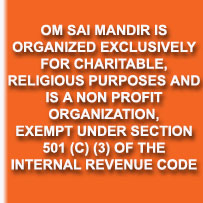
|
|
|
|
|
|
|
|
|
|
|
Significance of Mahashivaratri The Lord is essentially formless and known by the name, Shiva. Despite being infinite, He manifests in the form of Shakti [nature] for the purpose of creation. Scholars also go a step further and describe Shiva as the Creator, the male aspect of God and Shakti as the creation, the female aspect. This, in the author’s opinion, is just for the purpose of explanation. For, the one who is infinite and formless is above and beyond the mortal attributes of gender. Shiva is the one to whom Mahashivaratri is dedicated. Shiva is often depicted as a deity bearing an ascetic form and engrossed in meditation. The three eyes of Shiva are the eyes which reveal the past, present and future. Shiva alone has all three. The elephant skin which forms His cloak is a symbol for the elemental bestial primitive traits which His Grace destroys; He makes them powerless and harmless; in fact, he tears them to pieces, skins them so to say, and makes them ineffective. His four faces symbolise Shaantham, Roudhram, Mangalam and Utsaaham [peace, fierceness, auspiciousness, determination]. Meditating thus on Shiva will help one get rid of the last lingering vestiges of delusion.2 The origin. Shastras [traditional Indian scriptures] attribute the origin of Mahashivaratri [the night dedicated to Shiva] to various stories. Some ascribe the holiness of this day to its being the birthday of Lord Shiva. The Lord being the one without a beginning or an end can, in reality, have no birthday. Another story commemorates the salvation attained by a hunter who sat on a bilva tree on the look-out for animals to kill, and without any intention to worship, unknowingly dropped some of its leaves on a Linga that lay beneath. This story, however, does not make clear why this day is specially sacred. Another story describes this occasion as the night on which Shiva danced the Taandava [cosmic dance] in the ecstasy of His innate nature, with all the Gods and Sages sharing and witnessing that cosmic consummation. When He consumed the Haalahala [poison] that emerged from the churning of the ocean and threatened to destroy the universe. The heat of the fumes were unbearable, even for Him. So, Ganga flowed uninterruptedly on His matted locks; but, that gave Him only partial relief. (It is for this reason that abhishekam [ritual bathing ceremony] is performed on Shiva regularly. The ritual pouring of water, it is said, is very pleasing to the Lord.) The Moon was placed on the head. That was of great help. Shiva, then, danced the Taandava with all the Gods and Sages. All this, it is said, happened on the same night and so, Mahashivaratri, was held in commemoration of this occasion. 1 The Significance. Shivaratri falls not just once a year, but once every month. Then why is this Mahashivaratri so important? Night is dominated by the moon. The moon has 16 kalas [fractions of divine glory], and each night, during the dark fortnight, one fraction is reduced, until the entire moon is annihilated on new moon night. From then on, each night, a fraction is added, until the moon is full circle on Full Moon Night. The Chandra (moon) is the presiding deity of the mind and hence the mind waxes and wanes like the moon. Chandramaa-manaso jaathah—out of the manas of the Purusha [Supreme Being], the moon was born. In a like manner, during the dark fortnight of the month, sadhana [spiritual striving] has to be done to eliminate each day a fraction of the mind, for, every day, a fraction of the moon too is being taken out of cognizance. On the night of Chathurdhasi, the 14th day, the night of Shiva, only a fraction remains. If some special effort is made that night, through more intensive and vigilant sadhana, like puja or japam or dhyaana [ritual worship, one-pointed repetition, holy names, and meditation], success is ensured. God alone has to be meditated upon that night without the mind straying toward thoughts of sleep or food. This has to be done every month; once a year, on Mahashivaratri a special spurt of spiritual activity is recommended, so that what is shavam [corpse] can become Shivam [God], by the perpetual awareness of its Divine Indweller. The chief aim of all sadhana is to eliminate the mind. It is only then that maaya [illusion] will be dispersed and the reality revealed. The Lingam. Lingam is the symbolic form of the Godhead. Lingam means that in which this Jagath [creation] attains laya [mergence]; that into which this Jagath goes (gamyathe). The three gunas [primordial qualities] are represented by the three-tiered Peetha [platform]; the Lingam above symbolises the goal of life. Lingam means “a symbol,” the symbol of creation, the result of the activity of the three gunas and of the Brahman [Supreme Reality] which permeates and gives it meaning and value. The worship of the Lingam must be done with faith in its symbolic significance.2 Emergence of the Linga from Swami. Swami in his Mahashivaratri discourse, once said: “This is a day dedicated to the Shiva that is in each of you. From the Himalayan ranges down to Kanyakumari, the entire country is resounding today to the authentic declaration “Shivoham,” “Shivoham” and to the adoration, “Om Namah Shivaya.” Since thousands pray here and elsewhere, in lakhs and crores, the Linga is emanating from Me, so that you may derive the bliss that pervades the world through Lingodhbhava [emergence of Linga]. The manifestation of the Linga is a part of My nature. The Linga emerges as a result of prayer and grace. You have to recognize in this event, a glimpse of Divinity, a sign of infinite grace. Just as Om is the sound symbol of God, the Linga is the form symbol or the visible symbol of God, the most meaningful, the simplest and the least endowed with the appendages of attributes. All forms merge in the formless at last. Shiva is the principle of destruction of all names and forms, of all entities and individuals. The Linga is the simplest sign of emergence and mergence.” Shivaraathri and Numerology. Based on numerology, every letter of the alphabet has a specific numerical value. "Si" bears the value 4. "Va" has the value of 5, "Ra", a value of 2. When the values of the three are combined, you have a total of 11. This eleven represents the eleven Rudras [negative or destructive principles]. Role of Rudras in man's life. What are the functions of these Rudras? The Rudras, in association with the Buddhi [the intellect], enter the. minds of people and cause them various types of difficulties and worries. Of these difficulties, three types are predominant in the world. They are Aadhibhouthika, Aadhyaathmika, and Aadhidhaivika. Aadhibhouthika refers to difficulties caused by the five elements (ether, air, fire, water and earth) and the five sheaths (relating to food, life, mind, awareness and bliss). These sufferings are caused by human beings, animals, insects or other creatures. Aadhyaathmika refers to sufferings caused by Vaatha [wind], Pittha [bile], and Kapha [phlegm]. Aadhidhaivika refers to the calamities caused to man by floods, drought, storms, earthquakes, and similar natural disasters. The eleven Rudras are the cause for all these sufferings. The whole world is permeated by the Rudras. Only Aadhidaivika has an element of security. Whatever emanates from Rudra is fraught with fear. The name itself testifies to the dangerous power implicit in it. Rudhram means that which induces fear. The eleven Rudras are dreadful in form. These dreadful entities enter the minds of human beings and subject them to all kinds of afflictions. While the Rudras are inflicting sufferings on mankind in various ways, by the control of the senses, if humans turn their minds towards God and devote themselves to Godly pursuits, they will find their path to Moksha [liberation]. Moksha means getting rid of Moha [the delusions relating to the physical]. 3 Rudras and sense-control. The Mahashivaratri festival has been designed to subdue these Rudras. With sense control the Rudras can be controlled. Control of senses is, however, not easy. Even if evil impulses from external sources are controlled, those arising from within cannot be easily controlled. But if, at least on one night out of 365 days in a year, the senses are brought under control, then peace may be experienced and the quest for liberation may be initiated. When the entire night is dedicated to the chanting of the Lord's name, one's mind, speech, and senses all get centered on God. This is a form of sense control. When this is done, people can realize the Supreme. The Lord is experienced as Sath-Chith-Aananda. Sath is Being, that which is eternally present. Chith is awareness (or consciousness). Chith is like water. When Sath (as sugar) is combined with Chith (as water) you have neither sugar not water, but syrup. The combination of Sath and Chith results in Aananda [Bliss]. When the unchanging, eternal Divinity unites with the changing and inert Prakrithi [nature], you have Aananda. The significance of Mahashivaratri is that it is an auspicious occasion when Sath-Chith-Aanandha can be experienced. Let us resolve, on this Holy Shivaratri, in the Presence of Shiva Sai, to visualize Shiva as the inner power of all. With each breath, you are even now, asserting “Soham,” “I am He,” not only you, but, every being that breathes, every being that lives, everything that exists. It is a fact which you have ignored so long. Believe it from now on. When you watch your breath and meditate on that magnificent truth, slowly, the I and the He will draw nearer and closer, until the feeling of separateness will fade away—and the Soham will be transformed into OM, the Pranava, the Primal Sound, the Fundamental Formula for God. That Om is the Swaswaruupa—the reality behind this “relative reality.”
Home
l
Activities l
Events l
Directions l
Timings l
Resources |
|
![]()


